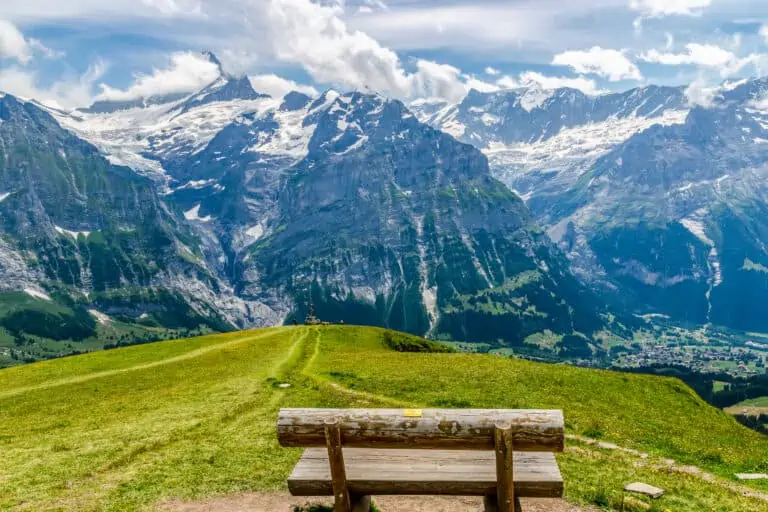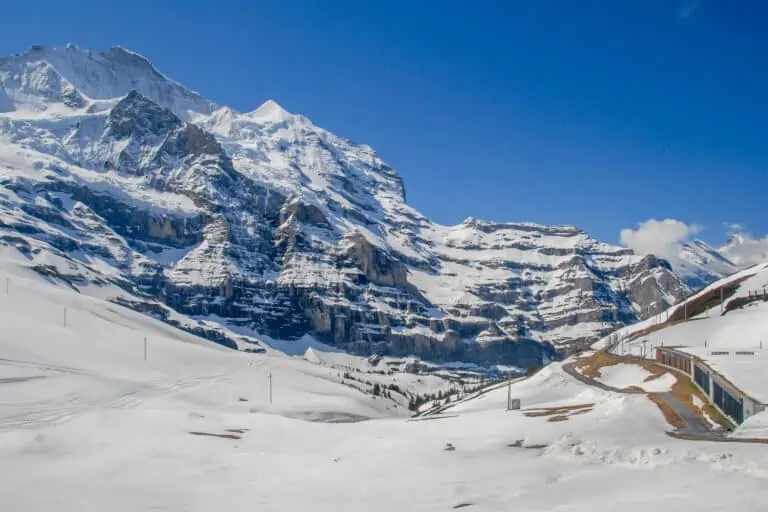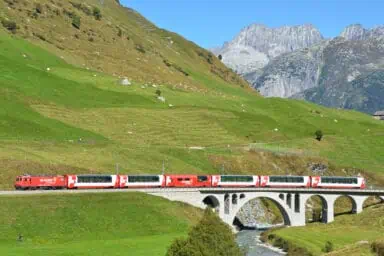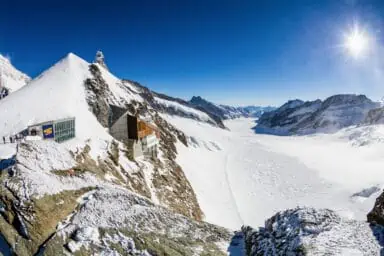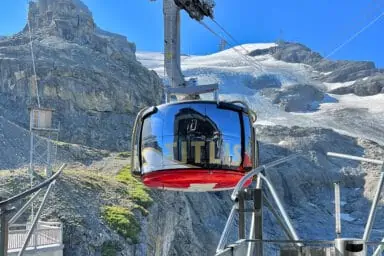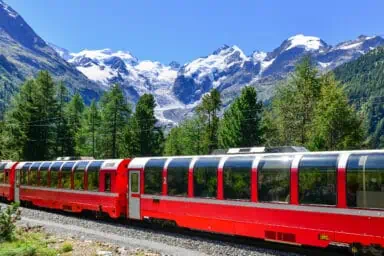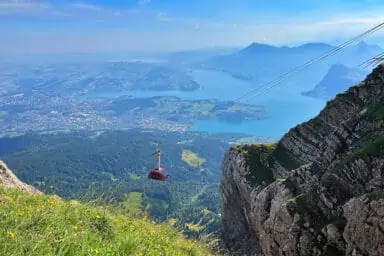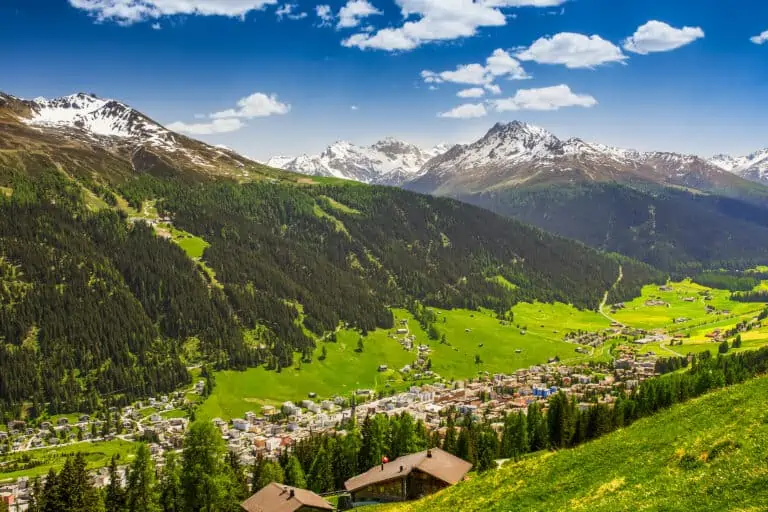What to see and do in the Swiss Alps 
Find activities in Switzerland's mountains
Travel info and map of the Swiss Alps 
How to visit the Swiss mountains?
The best way to travel to and in the Swiss Alps is by public transport. Trains, buses and mountain transport get you to many places that you can't even reach by car. Plus: you have to be an experienced and cautious driver to safely explore the Swiss pass roads.
How public transport in the Swiss mountains works
Frequent trains or buses transport you to villages in or at the foot of the mountains. There, you can switch to cable cars, funiculars, and cogwheel trains into even higher mountains.
Mountain transport valley stations are often very close to Swiss rail and bus stops.
Learn more in our Swiss public transport guide.
How long it takes to reach the Alps
In many cases, it takes 1 to 2 hours of train traveling from your Swiss arrival town before you're in the mountains. The exact times depend on your route. Some examples:
- If you arrive from Zurich, you can reach Lucerne (where the somewhat lower Central Alps or Pre-Alps are located) in 0h40. Interlaken right near the Bernese mountains is at 1h55-a ride.
- If you enter Switzerland via Geneva, you'll be in Montreux (where the western side of the Alps range start) in 1h00. Gstaad, which is in the mountains, is 2h45 away.
- If you enter via Basel, you can reach Interlaken near the Alps in 2h00.
- If you enter from Italy, you can travel from Tirano at the border to the alpine valley Engadine in 2h10. Alternatively, you can travel via Domodossola and Brig. Brig gives quick access to many resorts in the Alps, such as Zermatt and Saas-Fee. A ride Domodossola-Brig takes 0h30.
How to save money on mountain trips
Many rail passes provide free traveling to Swiss mountain resorts, and discounts on trips further into the mountains. In nearly all of our own holidays, we find that using a rail pass is much cheaper than buying full-fare tickets for mountain rides.
Find out how to choose the right pass for your plans here.
The Swiss Alps on a map
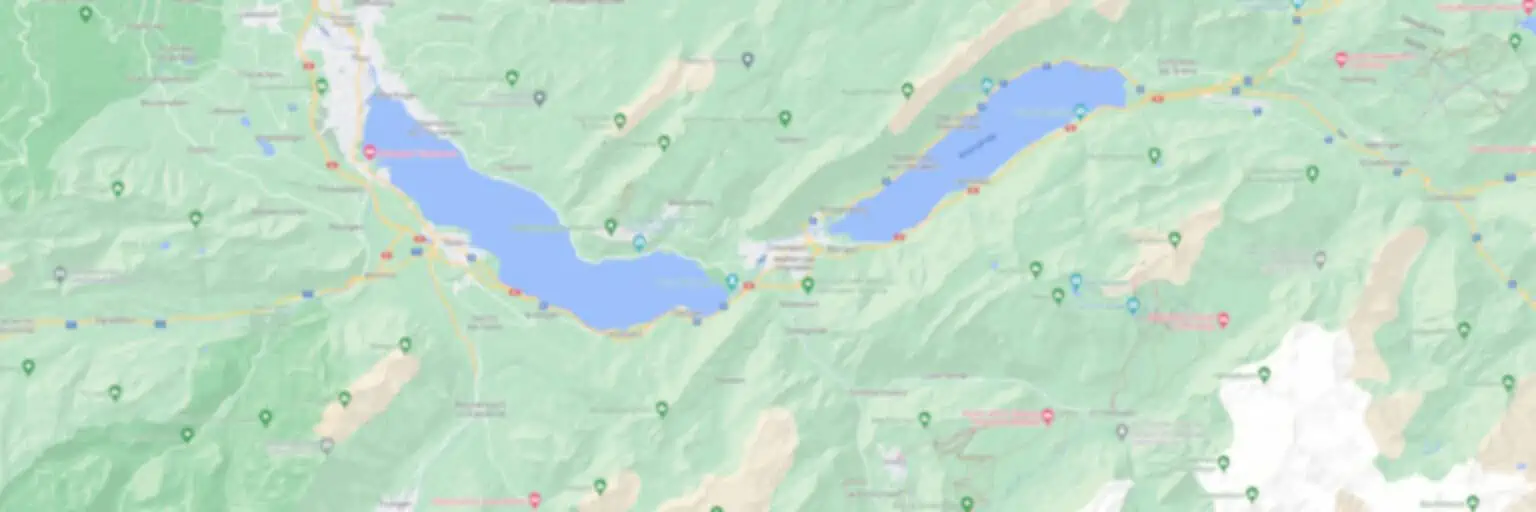
The best months to visit the Swiss Alps 
We think you can best travel to the Alps in early January to late February, mid April to mid October and mid December to late December.
What to expect during our recommended months
- Mid-December, late December, January and February are best for a winter visit. The mountain tops are mostly snow-covered, and villages at altitudes of 1500 m or more are often snowy too. This is the best season for skiing, snow hikes and other winter fun. Train rides are beautiful during this time of the year too.
- April to October are best for other outdoor activities in the mountains: boat rides, mountaintop visits, hiking, mountain biking and adventure sports. Most alpine hiking trails are accessible in July, August, and September. Valley and mid-altitude hikes are possible in shoulder months such as April, May and October too.
Visiting the Alps in March, November, and early December
We think the Swiss Alps are less suitable for a visit in March, November, and early December. That's because quite some mountain railways shut down for maintenance breaks, and the immediate surroundings of mountain villages typically look a bit dull.
March, November and December are perfect for visits to the larger cities in the north and west of Switzerland though, and for all sorts or train rides.
Learn more about the best time to visit Switzerland here.
Weather and temperatures in the Swiss Alps 
How warm and cold does it get in the Swiss mountains?
- In summer, expect daytime temperatures ranging from 10°C to 25°C in mountain villages. It's often between 0°C and 10°C at mountaintops.
- In winter, it can freeze in mountain resorts at night and even during the day. But daytime temperatures of 5°C or more are no exception either. It usually freezes by a few degrees in the mountains, during the daytime too.
These are very general indications. Temperatures in the Swiss Alps vary hugely by altitude and location.
Are the Swiss Alps always cold and snowy?
The mountain peaks are always much colder than areas at lower altitudes. But this doesn't mean the Swiss Alps are freezing cold and covered by lots of snow year-round.
If you want to experience snow, you can best visit in January or February. Don't expect a snow-covered alpine world if you visit the Alps between April and October.
- Daytime temperatures in mountain villages and valleys are quite mild during these months.
- Even though the highest Swiss peaks usually have snow year-round, the amounts can be quite low. This is especially true for the (late) summer: in July, August and September.
More details about the weather in Switzerland
Check our Swiss weather section to learn what weather in Switzerland is like, and how to interpret forecasts.
5-day forecast for the Swiss Alps
Below is a 5-day forecast for Andermatt, a village located centrally in the Swiss mountains. Consult a local, short-term forecast for your specific destinations.

Hotels and holiday homes in the Swiss Alps 
There are countless hotels in Swiss mountain resorts, and even right on mountaintops. It's a very special experience to watch the sunset and sunrise amidst the Swiss peaks!
In addition, you'll find large offer of holiday rentals in the mountain areas of the Bernese Oberland, the Valais and Graubünden. The choice is slightly smaller in the Lake Lucerne area.
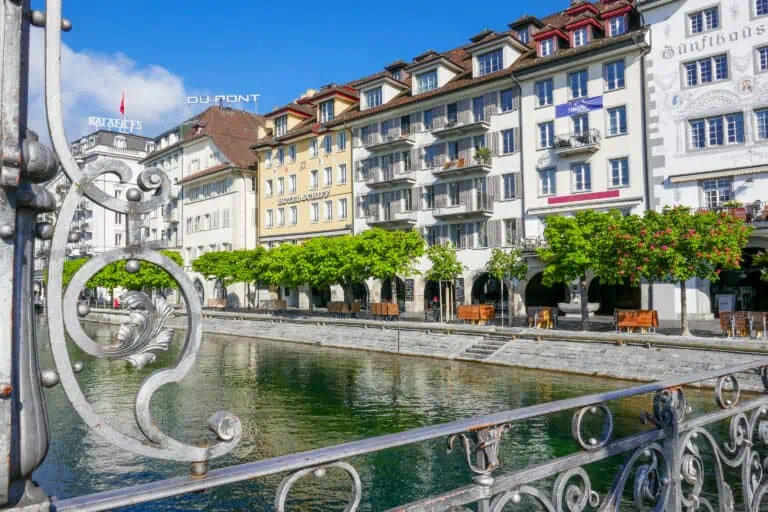
Hotels in Lucerne, Switzerland
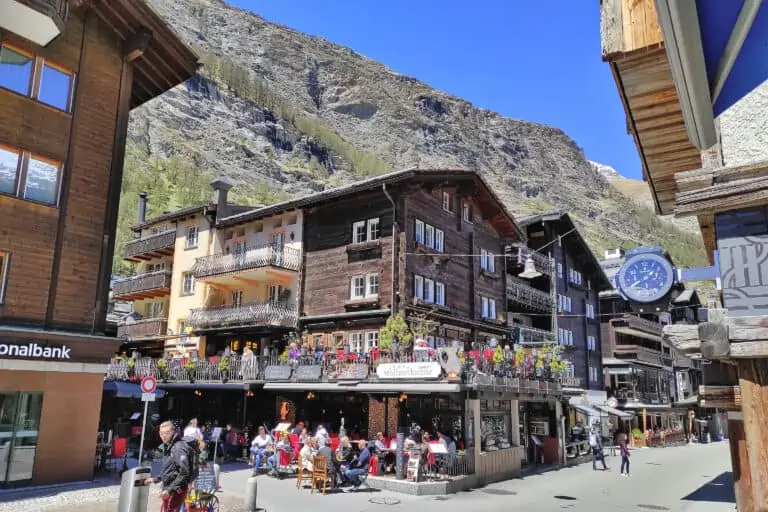
Find your hotel in Zermatt: from budget to luxury
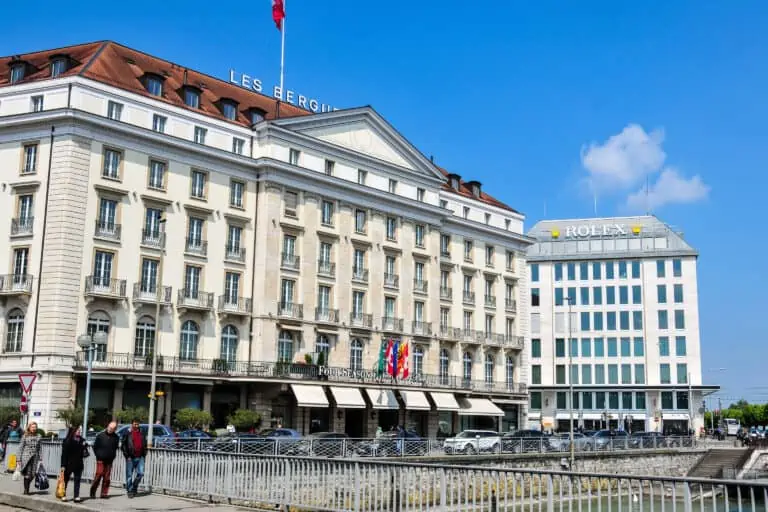
Find your hotel in Geneva, Switzerland
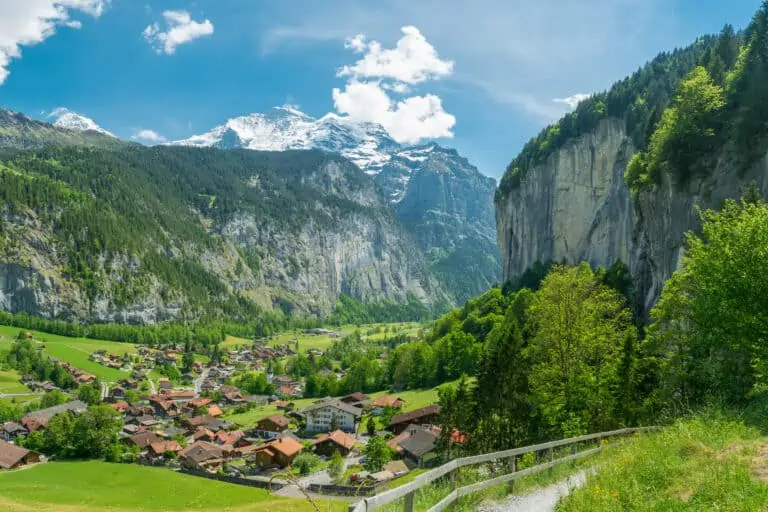
Hotels in the Jungfrau Region, Switzerland
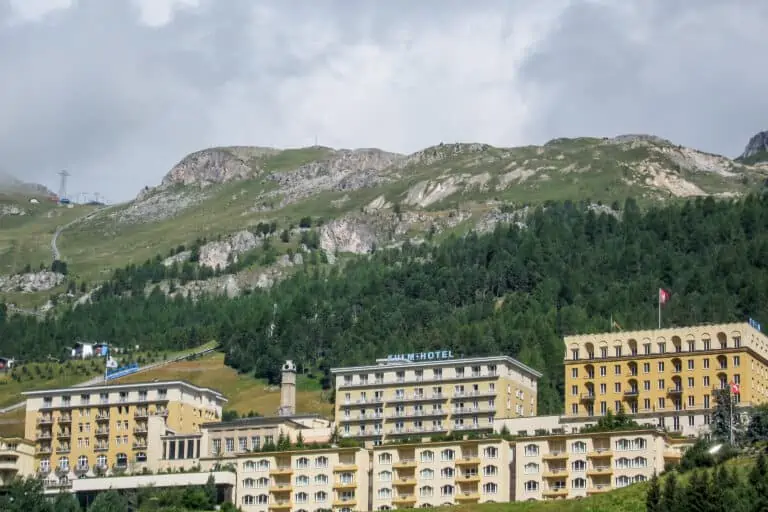
Hotels in St. Moritz, Switzerland
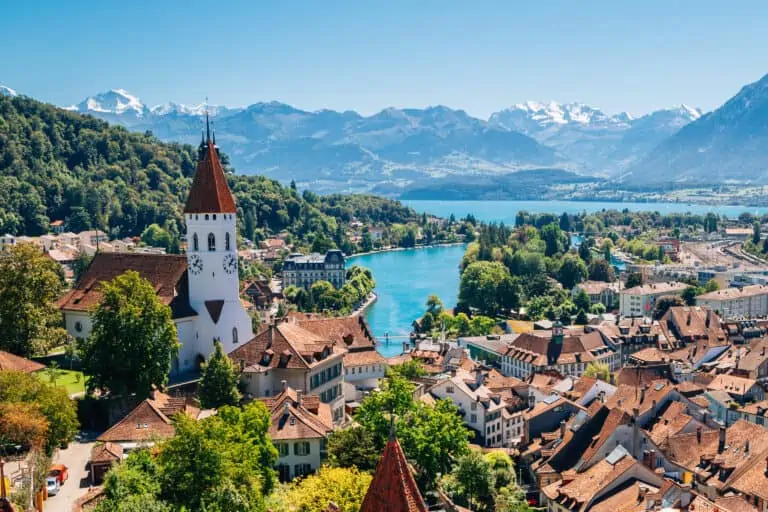
Hotels in the Bernese Oberland, Switzerland
Why visit the Swiss Alps?
5 reasons why the Swiss Alps are worth visiting
- The Swiss Alps are high and spectacular. The highest peaks are covered by snow year-round.
- They contain extremely varied landscapes: from friendly rolling green hills and flower-covered valleys to rugged alpine terrain.
- The Swiss mountains are very easy to visit thanks to the public transport network with lots of cableways, funiculars and cogwheel trains. Famous long-distance trains take you across the mountains too: the GoldenPass, Bernina Express and Glacier Express for example.
- Switzerland is home to several famous and iconic mountains. Examples are the Matterhorn near Zermatt and the Jungfrau south of Interlaken.
- You’ll get value for your money. Nature in Switzerland is well preserved. Public transport, mountain resorts, and accommodation are comfortable and clean.
Diversity in a small area
There are countries with higher mountains, larger glaciers and more lakes than Switzerland has. Unique for Switzerland is the fact that there is an enormous diversity of landscapes and nature in a relatively small area.
Just make a train trip with the Bernina Express to see for yourself: within a few hours you will see fresh meadows, bare icy mountain scenery and sunny villages with palm trees and vineyards. That’s typical for Switzerland: diversity in nature, culture and weather.
Easy-to-visit mountains
Switzerland has a relatively high population density, and the Swiss Alps are a very popular holiday destination. This results in an excellent network of (cogwheel) trains, funiculars, cable cars, post cars and boats.
Unlike many other mountainous regions, it is very easy for anyone to experience the Swiss Alps up close. You can visit places that used to be accessible to mountaineers only.
What exactly are the Swiss Alps?
The Swiss Alps are the Swiss part of the Alps: a mountain range in Europe that stretches across France, Germany, Switzerland, Liechtenstein, Italy, Austria, and Slovenia.
The Swiss Alps are often characterized as the most striking part of this entire mountain range. The Swiss peaks are high, spectacular, and easy to visit.
Where are the Swiss Alps?
The location of the Swiss Alps
The Swiss Alps are located in the southern half of Switzerland. They’re between the lower Swiss Plateau in the north (with larger cities such as Basel and Zurich) and the Swiss-Italian border in the south. From west to east, the Swiss Alps stretch out from Lake Geneva to the Swiss-Austrian border.
Together, the Alps cover about 60% of Switzerland.
In the north-west of the country, the lower Jura mountains are located. They run across the French-Swiss border, roughly between Basel in the north and the western part of Lake Geneva in the south. The Jura mountains aren’t part of the Alps.
The northern and southern Swiss Alps
Simplified: there are two types of landscapes in the Swiss Alps. They’re divided by mountain ranges such as the Bernese Alps in the west and the Glarus Alps in the east.
- North of the highest mountain tops, the landscape looks fresh and green. The Bernese Oberland, the southern part of the Lake Lucerne area, and the northern half of Graubünden are good examples.
- The landscape south of these tops is drier and rougher. For instance, this holds for the Valais and the southern half of Graubünden with the Engadine.
Regions in the Swiss Alps
The Alps form a large area that spans multiple Swiss holiday regions. An overview from west to east:
- Lake Geneva: the Alps start around Vevey on the lake, in the canton of Vaud. The eastern part of Lake Geneva, with Lausanne and Montreux, is much more mountainous than the western part with Geneva.
- Valais: this large southern canton contains several of Switzerland’s highest peaks. The Rhone Valley divides this canton into a northern and southern half, with high mountains on both sides. There are countles side valleys to the Rhone Valley, with famous destinations such as Zermatt, at the foot of the Matterhorn, and Saas-Fee.
- Bernese Oberland: this region in the northern Alps could well be Switzerland’s most famous mountain destination. It contains beautiful holiday areas such as Lake Thun, Lake Brienz, and the Jungfrau Region. The central town is Interlaken.
- Lake Lucerne: this large lake area is just north of the Alps. The mountains here are also called the Central Alps or Pre-Alps. South of the lake, the Gotthard Massif begins. This is part of the Swiss Alps mountain range.
- Ticino: just like the Valais, this is a southern canton. High mountains surrounding the Gotthard Pass make up the north of this area. The rest of Ticino is at a relatively low altitude and not in the Alps.
- Graubünden in the east: this is Switzerland’s largest canton. The northern half contains beautiful rolling green hills and mountains. Towns such as Chur and Davos can be found here. The southern half has higher peaks. The main area here is the Engadine, where Graubünden’s highest mountains can be found.
How high are the Swiss Alps?
The elevation of the Swiss Alps varies roughly from 2500 to 4500 m altitude. The highest peak is the Dufourspitze in the Valais at 4634 m altitude. Examples of the height of some famous Swiss mountains:
- Eiger (3970 m)
- Jungfrau (4158 m), with the Jungfraujoch at 3454 m
- Matterhorn (4478 m), south of Zermatt
- Pilatus (2128 m)
- Titlis (3238 m)
The Mont Blanc is the highest peak of the entire European Alps range. It’s located on the French-Italian border. It’s close to Switzerland, but not in it.
FAQ about the Alps of Switzerland
-
What city is closest to the Swiss Alps?
Lucerne and Bern are larger Swiss cities that are close to the Swiss mountains: you can get there in 30 to 60 minutes by public transport. Zurich, Geneva, and Basel are farther away from high mountain destinations: at a 1- to 2-hour train ride.
Most destinations directly near and in the Swiss Alps aren’t cities, but smaller towns and villages. Examples are Interlaken, Wengen, Davos, Zermatt and St. Moritz.
-
How many days do I need in the Swiss Alps?
We recommend spending at least 3 to 4 days in the Swiss Alps. This allows you to explore one or two base regions, visit a couple of mountain tops, and do some other activities, such as hiking or taking a boat trip.
For a good exploration of the Swiss Alps, you can best plan a holiday of 2 to 4 weeks. Even if you base yourself in just one region, you won’t get bored. This is because there’s a lot to see and do in each region, and because you can make day trips to other parts of the country by train.
-
What is the best way to see the Swiss Alps?
You can best travel by public transport once you’re in Switzerland. Trains take you from larger arrival cities such as Zurich, Basel and Geneva to towns in the mountains. From there, you can make countless day trips to mountain tops and lakes using the boats, coghweel trains, cableways and funiculars.
-
What is the most beautiful part of the Swiss Alps?
The Jungfrau Region and the Matter Valley with Zermatt are some of Switzerland’s most spectacular and famous alpine regions. They offer high and iconic mountain peaks, but also green valleys with traditional mountain villages and wooden chalets.
One of our personal favorites is the Engadine in Graubünden: a high-altitude valley with magnificent nature in both summer and winter.
Where to stay in the Swiss Alps 
These are the best towns in and near the mountains.
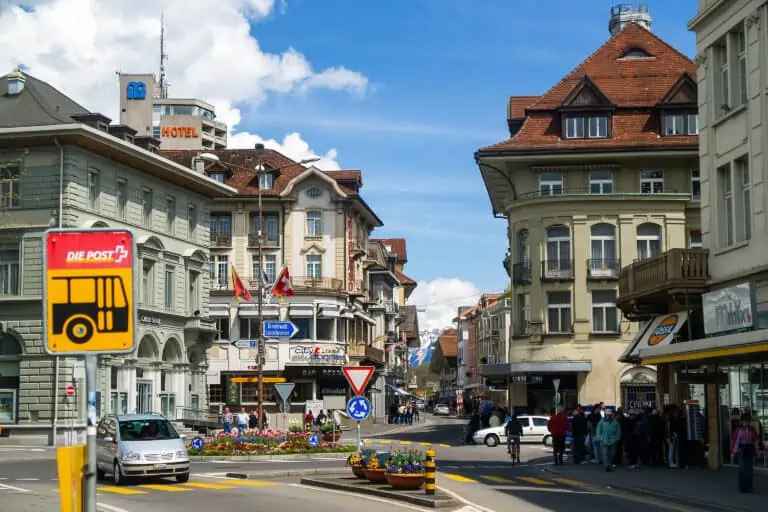
Interlaken
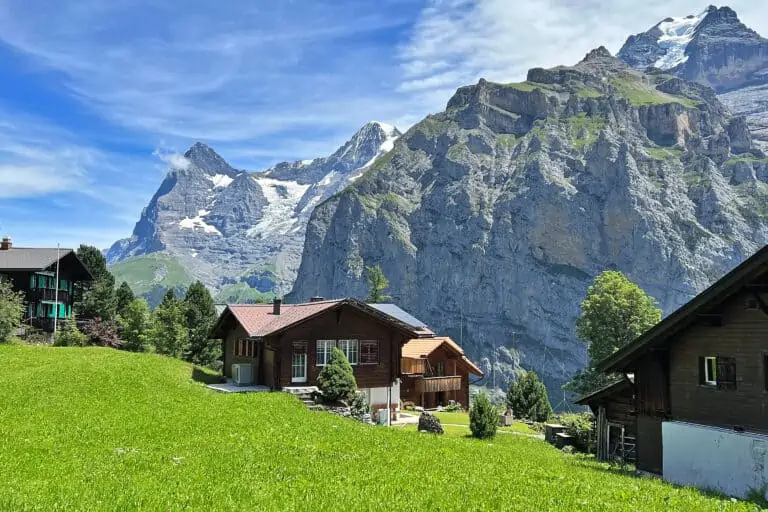
Mürren
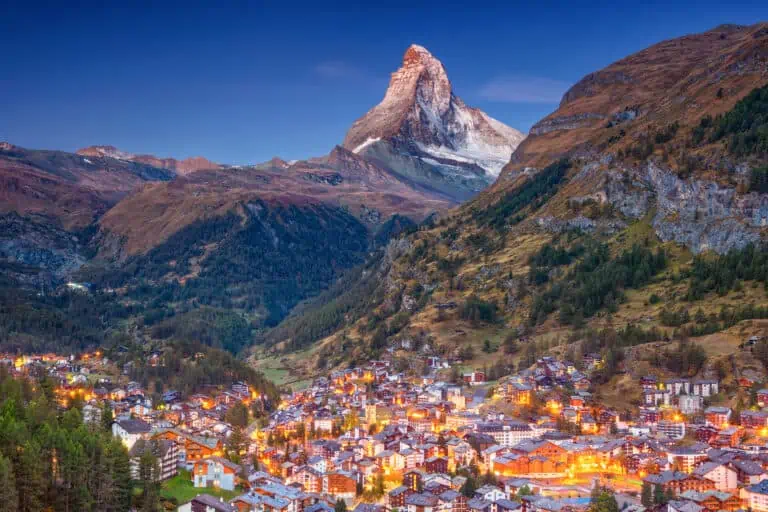
Zermatt
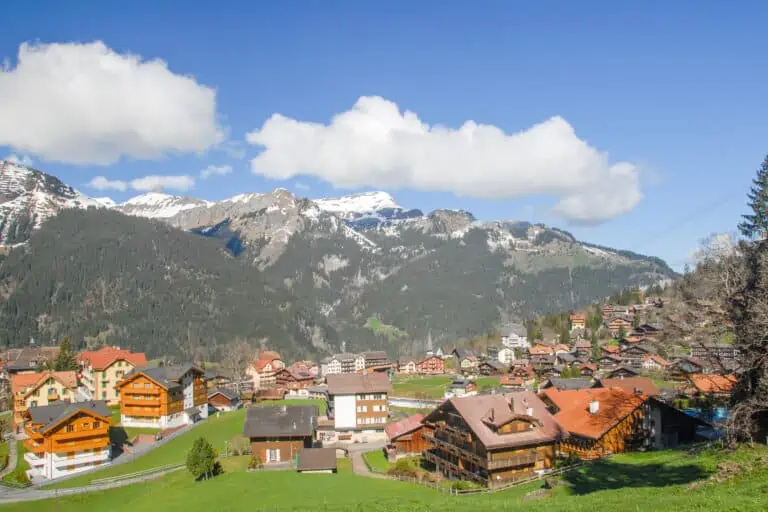
Wengen
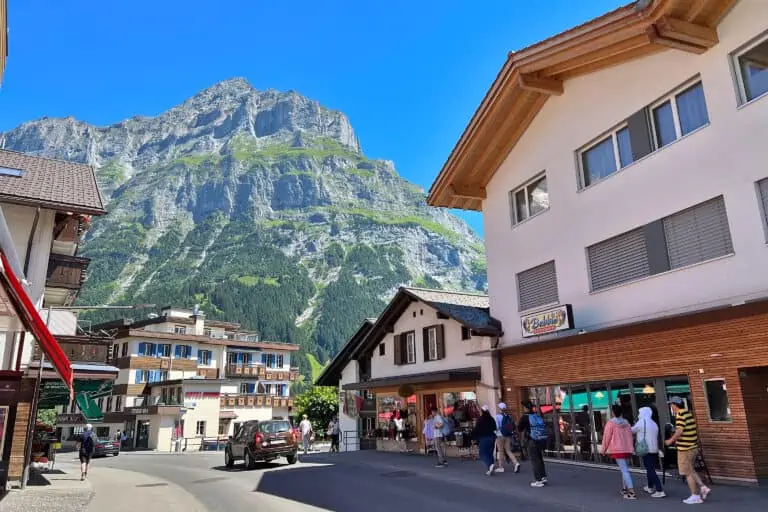
Grindelwald
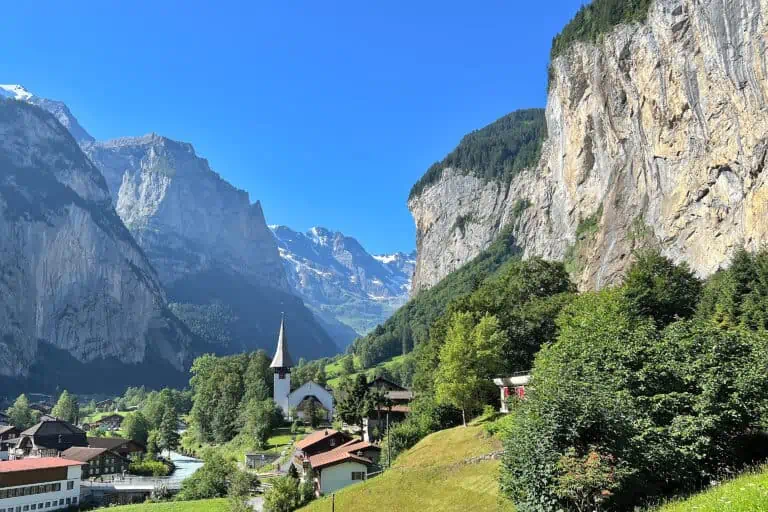
Lauterbrunnen
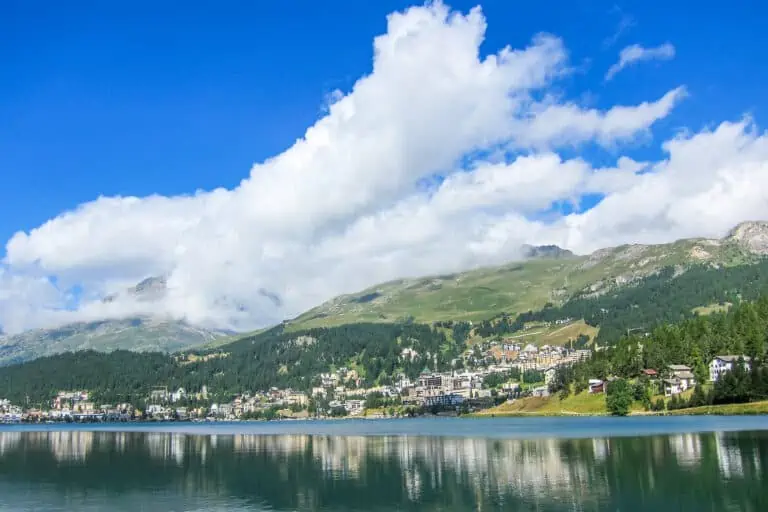
St. Moritz
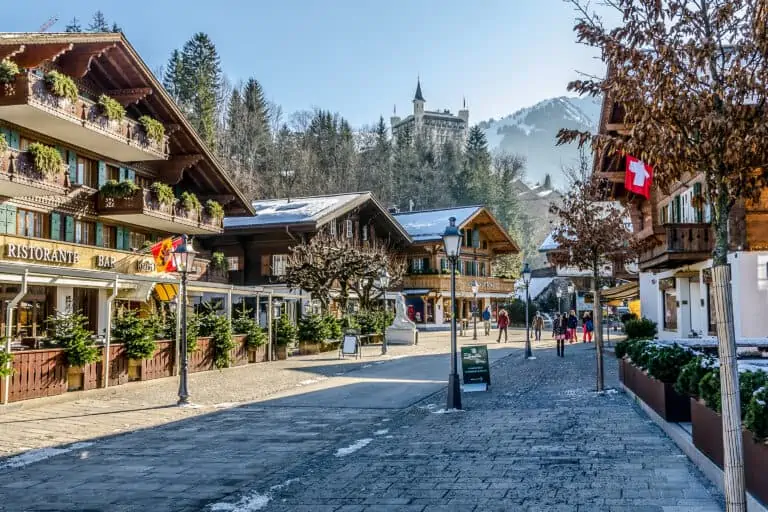
Gstaad
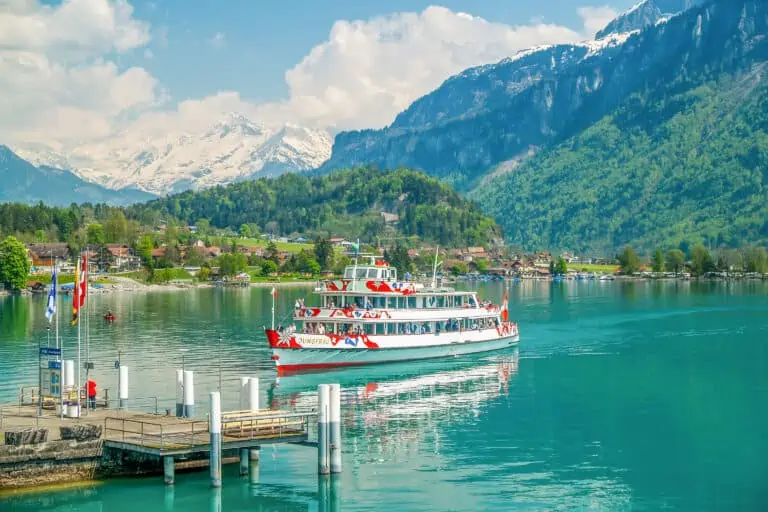
Brienz
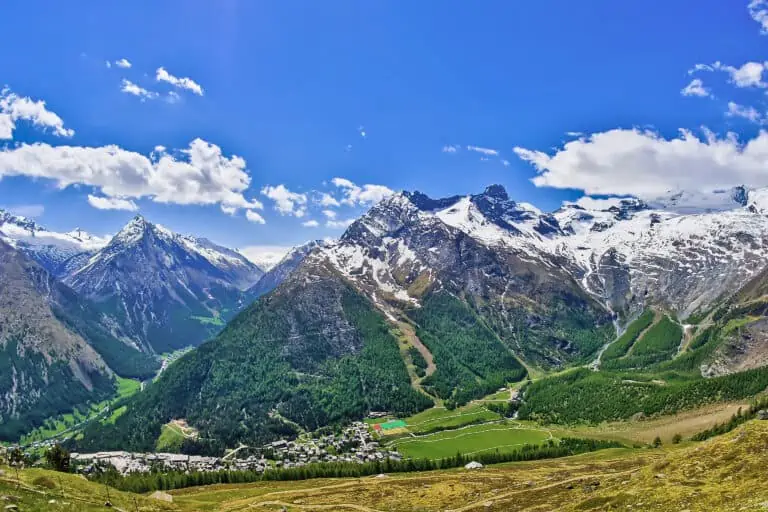
Saas-Fee
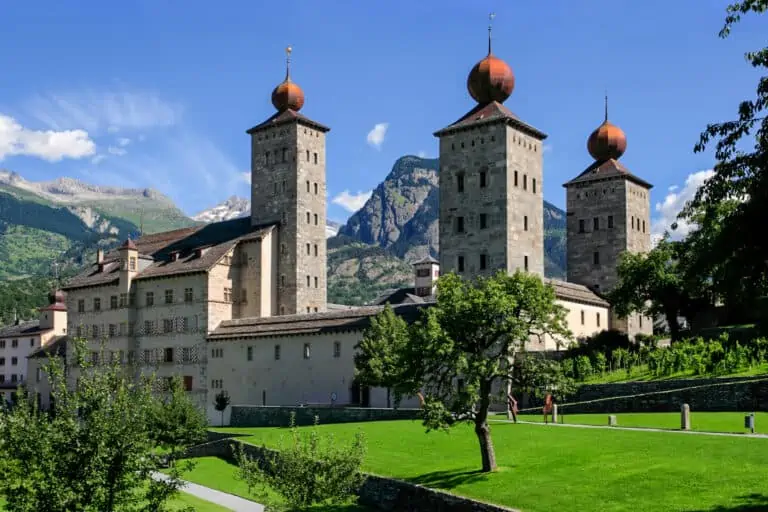
Brig
Itineraries in the Swiss Alps 
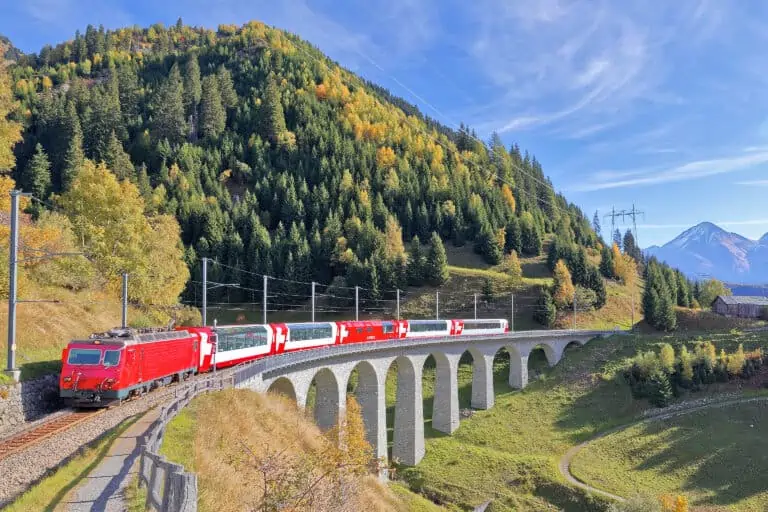
Glacier Express: 3-day classic tour from Zurich
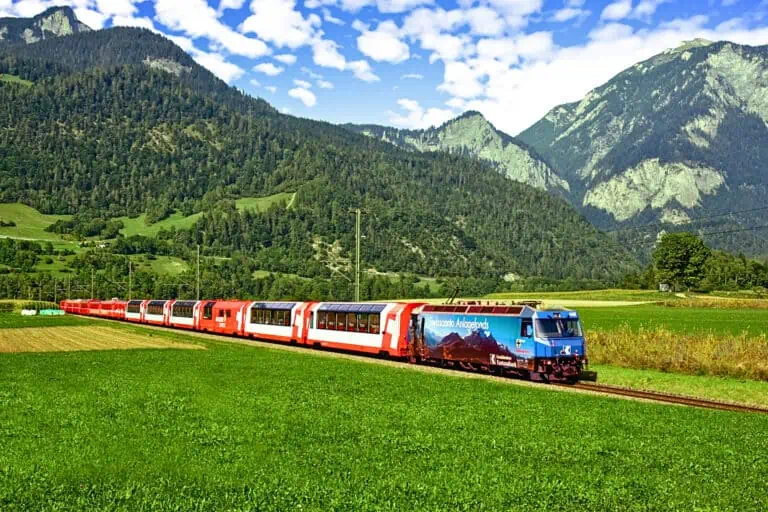
Glacier Express: 4-day slow-paced tour from Zurich
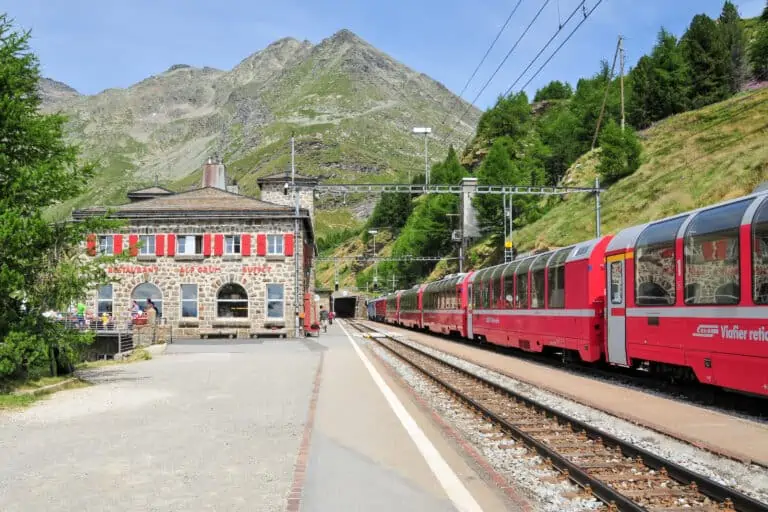
Ultimate scenic trains
What we write about the Swiss Alps in our blog 
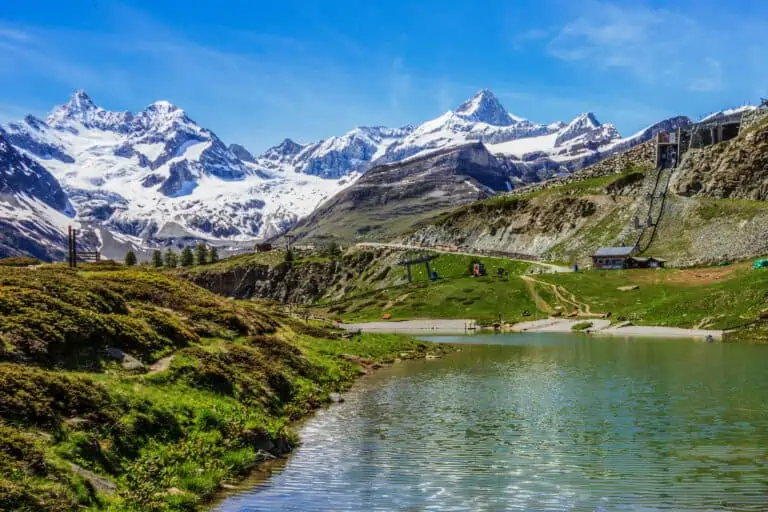
Gornergrat, Matterhorn Glacier Paradise, Sunnegga-Rothorn
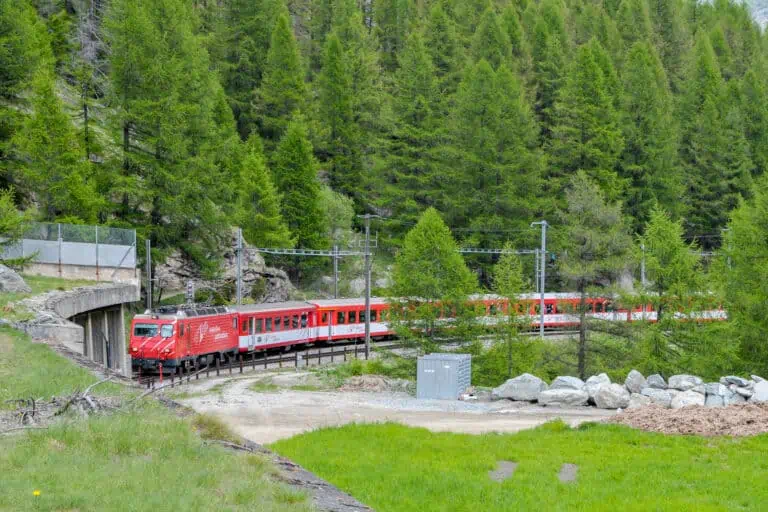
Hike Täsch-Zermatt
